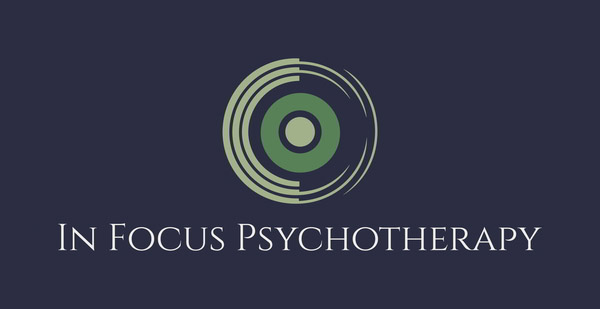There are different types of anxiety that individuals experience and different treatment approaches that work for each type. Specific client symptoms inform diagnosis and treatment.
Panic Attacks – Panic Attacks are a type of intense, short term anxiety that occur when we have a strong physiological reaction to a stressor. The defining feature of a panic attack is when our “fight or flight” reflexes kick in, resulting in strong physiological symptoms of anxiety.
These symptoms may include:
- Increased Heart Rate
- Shortness of Breath
- Sweating
- Feeling Dizzy or Faint
- Feeling Out of Control of One’s Response
- Derealization/Depersonalization (A sense that one is not really “there”)

Panic Attacks are fear-inducing, and can seemingly come out of nowhere depending on the types of stressor we are exposed to. Often, they are mistaken for heart attacks or other more serious physiological issues. This can lead to a more complex system of thought around panic attacks, and avoidance of stimulus that might induce a panic attack. Many people that experience panic attacks report feeling panicked about the prospect of another panic attack (a vicious cycle where the fear of a panic attack can cause one).
Treatment of Panic Attacks includes both pharmacological and behavioral interventions. Short acting anxiolytics can help blunt the physiological symptoms of panic. Behavioral interventions are aimed at learning to tolerate some symptoms of panic. After all, since a panic attack is just severe anxiety, it won’t hurt us. Cognitive interventions regarding the thoughts associated with panic are also helpful.
Panic Attacks can set on quickly, and luckily remit quickly. Once a client starts to get just a bit mastery over the panic symptoms, there is a tendency to feel more in control, less anxious, and the physiological symptoms can die down quickly. In addition, the fear of another panic attack diminishes.
Generalized Anxiety – Generalized Anxiety is defined as a tendency to worry about several life domains on a consistent basis. With Generalized Anxiety, sufferers tend to feel anxious and worry throughout the day, for a significant portion of the day. Worry is a cognitive symptom of generalized anxiety that can include perseverating on and ruminating about a stressor without resolving the stressor. Often these worries feel interconnected, jumbled, and difficult to organize. Physiological symptoms associated with generalized anxiety can persist over time as well, with feelings of tension or fatigue.
Treatment for generalized anxiety typically takes a cognitive approach. One starting point is understanding what individuals are feeling stressed about, and how they think through stressors. Sometimes it is helpful to adjust that thinking into less worrisome responses, or experiment with the idea of not solving certain stressors to re-prioritize others.
Another area to explore in generalized anxiety treatment is behavioral modification – the idea of changing out lifestyle to experience less stress. While this is not possible for all clients, many of us do find ourselves taking on too much and feeling the stress of over-commitment on a daily basis.
A third plank in generalized anxiety treatment is learning how to relax in the moment, practice relaxation strategies on a daily basis, and build periods of relaxed concentration back into our work and home lives.
Overall, using a variety of cognitive and behavioral treatments can help clients define the causes of generalized anxiety, examine the stress in their lives, and locate opportunities in their schedules to try different approaches that minimize the buildup of worry and tension associated with generalized anxiety.
Specific Phobias – Specific Phobias are a type of anxiety that is associated with a particular stimulus. Common specific phobias are fears of flying or driving, fears of certain animals, fear of enclosed places, or fears associated with past traumatic events. Because specific phobias are often related to trauma, the principles of treating trauma related phobias are similar to treating anxiety related phobias.
One treatment approach that is effective for specific phobias is exposure therapy. With exposure therapy, we try to get used to small levels of the specific phobia.
For example, imagine that you are a brilliant medical student that is very fearful of blood. You know that in your training you will be on clinical rotations involving surgeries and treatment of injuries. You also need to know how to draw blood and administer IV lines. In short, you can’t totally avoid the feared stimulus.
Exposure therapy might work in the following ways…
- Imaginal Exposure in session to gauge how you feel talking about the feared stimulus (e.g. conversations about a future surgical residency)
- Real Life Exposure to photos of routine medical procedures that involve some amount of blood
As you begin to get used to talking about typical ways that you might encounter blood in a medical setting, exposure therapy can ramp up the intensity to more intense situations like:
- Sitting next to someone drawing blood at a med school blood drive
- Donating blood while looking away from the needle
- Discussing a more intense surgical procedure
- Finally, you might start to approximate more serious scenarios as you habituate to the middle levels of exposure therapy
- Sitting in the far back of a medical school surgical theatre
- Practicing starting IV lines with a fellow med student
- Dissection and other lower stakes training experiences
What makes exposure work is that at each level, we learn skills to moderate our anxiety about the specific phobia. We pause in sessions and work on both physiological signs of anxiety as well as worries about the feared stimulus. By “leaning into” the stimulus just a bit, the client has an opportunity to elaborate on why they fear it, examine their thinking around the stimulus, and relax in the presence of the stimulus.
Social Anxiety – Some individuals note that they have anxiety symptoms related to interacting with others or being in large groups. Social Anxiety has some elements of both generalized anxiety and specific phobias, and as a result we can approach treatment with different combinations of both cognitive work, behavioral modifications, and also exposure work. Similar to the above treatments, the goals of therapy for social phobias typically involve exploration of our thoughts and physiological responses to different types of social interaction. Once we gain a sense of why we have social anxiety, we can then target some effective exposure work to move clients closer to their social goals.
Overall, Anxiety symptoms are a category of symptoms that are amenable to various mental health treatment styles. While anxiety can be disabling, the one “silver lining” common to different anxiety symptoms is that our motivation to adapt, grow, and change as human beings can lead to fun and effective ways to re-examine our relationships to stressors and find effective solutions.





